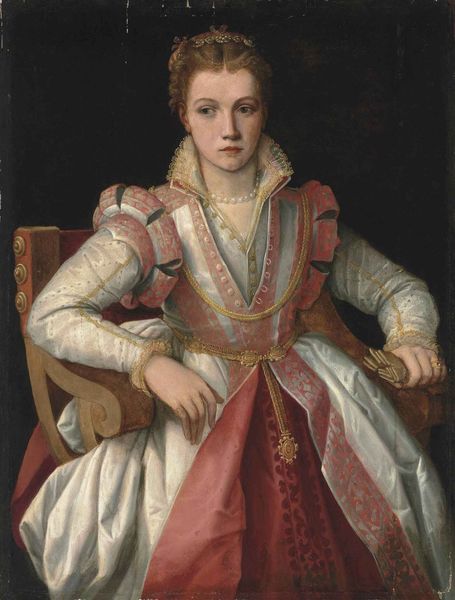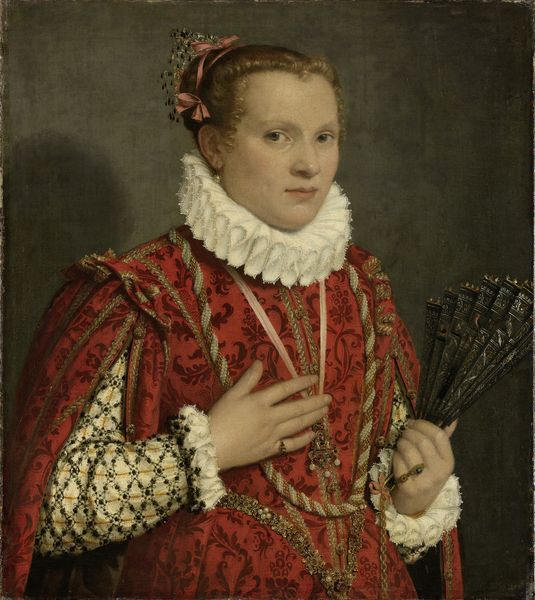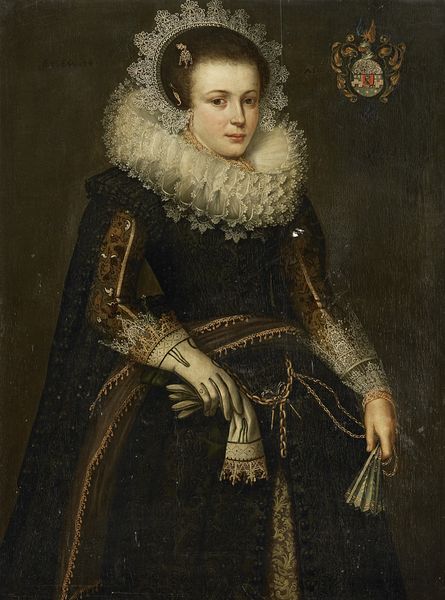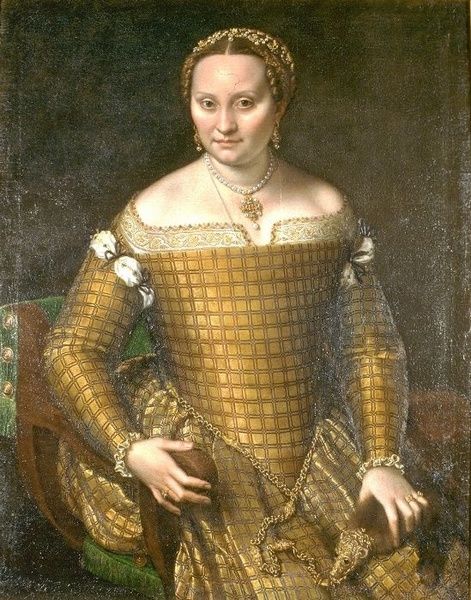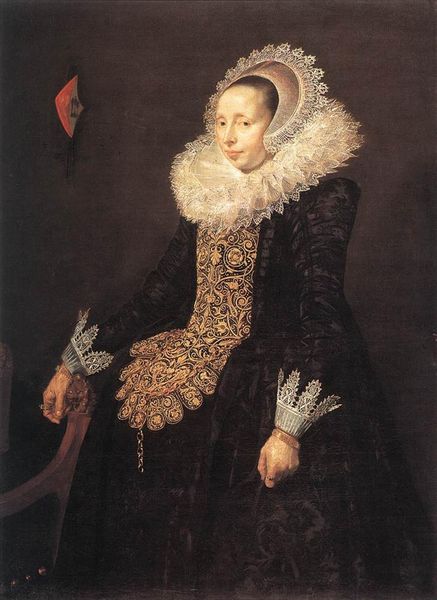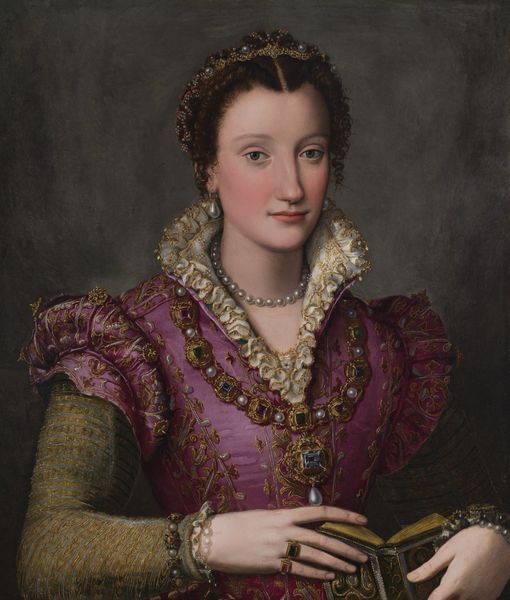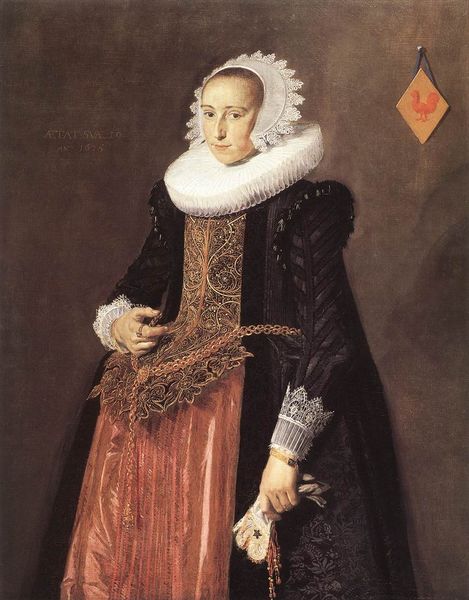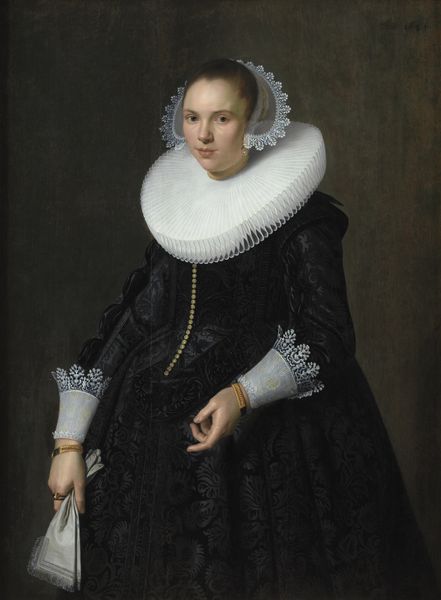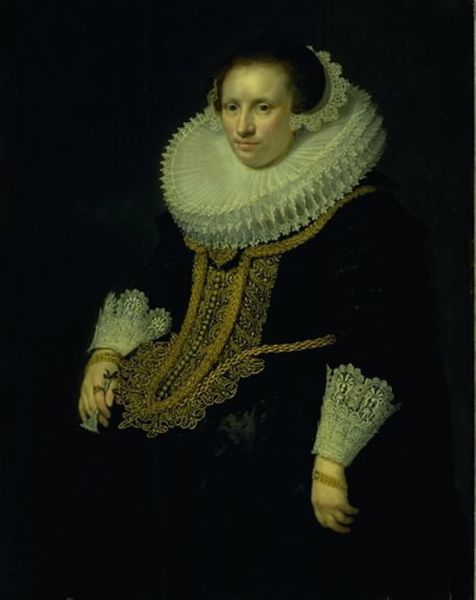
painting, oil-paint
#
portrait
#
painting
#
oil-paint
#
genre-painting
#
history-painting
#
lady
#
italian-renaissance
#
portrait art
#
fine art portrait
#
celebrity portrait
Copyright: Public domain
Lavinia Fontana painted this portrait of an unknown noblewoman in the late 16th century using oil on canvas. But consider what's *on* the canvas: the sumptuous gown, a deep red fabric intricately embroidered with gold thread, speaks volumes about the sitter’s wealth. The making of such a garment would have been labor-intensive, involving skilled weavers, dyers, and embroiderers. The gold thread itself would have been a precious material, reflecting the high status of both the wearer and the artistry involved. Look closely at the details: the delicate lace collar, the elaborate jewelry, each element a testament to the skilled craftsmanship and the economic power required to commission such finery. Fontana, as a female artist in a male-dominated field, was acutely aware of the significance of these material displays. She uses her skill as a painter to meticulously document the textiles and adornments of her subject, elevating the status of both the sitter and the crafts that define her social position. In doing so, Fontana blurs the lines between fine art and craft, inviting us to consider the social and economic forces embedded in every brushstroke.
Comments
No comments
Be the first to comment and join the conversation on the ultimate creative platform.

